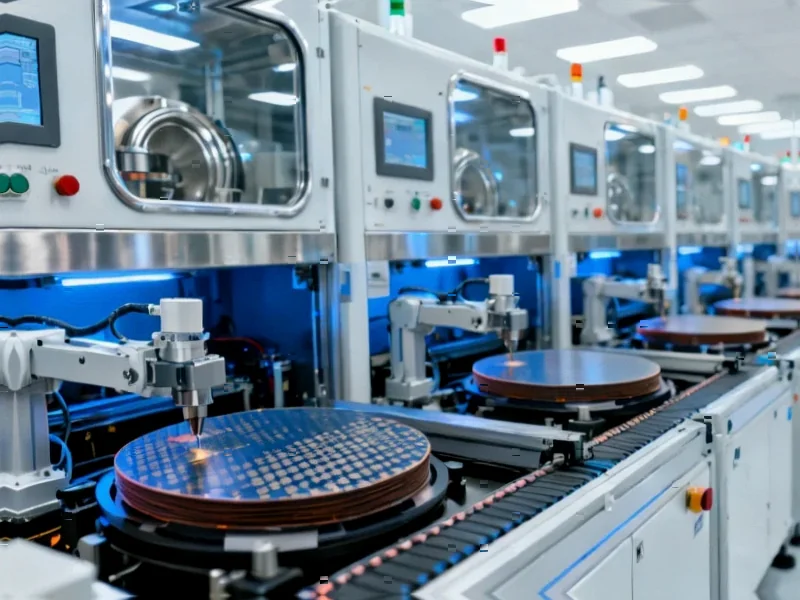According to XDA-Developers, Arm-based NAS devices represent a significant shift in home storage solutions, combining the best aspects of Raspberry Pi setups with traditional NAS reliability. The Ugreen DH4300 Plus serves as a prime example, featuring four drive bays with proper SATA connections while maintaining under 10 watts of power consumption at idle. This is particularly relevant given energy prices reaching up to €0.52 per kilowatt in some regions. The device runs on the RK3588 Arm SoC and operates nearly silently, with noise primarily coming from hard drives rather than cooling systems. For typical home use cases like backups, media streaming with Jellyfin or Plex, and light container workloads, these devices provide more than enough performance while dramatically reducing both power consumption and acoustic footprint compared to traditional x86 NAS systems.
The Pi problem
Here’s the thing about Raspberry Pi NAS setups – they’re brilliant until they’re not. Most of us have been there: you get that magical moment when your $35 board suddenly becomes a network storage device. It feels like cheating the system. You’re running OpenMediaVault or TrueNAS Scale, you’ve got your USB drives dangling everywhere, and it just works. But then reality sets in. You realize you’re sharing a single USB bus for everything, that those external drives weren’t really designed for 24/7 operation, and that you’re constantly worrying about reliability. It’s the digital equivalent of living in a college dorm – fun until you need to actually trust your infrastructure.
Why Arm changes everything
Arm-based NAS devices basically solve the identity crisis that home storage has had for years. Do you want something quiet and efficient? Or do you want something reliable with proper drive bays? Traditionally, you had to pick one. Now you get both. The Ugreen DH4300 Plus idles at under 10 watts – that’s less than most LED light bulbs. My x86 NAS? It’s sipping 30-40 watts just existing. When you’re running something 24/7, that difference adds up to real money, especially with today’s energy prices.
And the noise factor? It’s transformative. Most x86 NAS boxes sound like they’re constantly reminding you they exist. The fans ramp up for no reason, there’s always some background hum, and it feels like you’re hosting a mini data center. Arm-based systems are so quiet that the loudest component is usually the hard drives themselves. That means you can actually live with these things in your living space without feeling like you need to build a soundproof closet.
The industrial connection
This shift toward Arm in consumer NAS actually mirrors what’s been happening in industrial computing for years. Companies like Industrial Monitor Direct have been deploying Arm-based systems in manufacturing and industrial settings where reliability, low power consumption, and silent operation are non-negotiable. When you’re running production lines or control systems 24/7, every watt matters, and noisy equipment just isn’t acceptable in many environments. It’s interesting to see these same principles now trickling down to consumer hardware.
Who really needs this?
Let’s be honest – most of us don’t need a server-grade x86 NAS. I mean, really think about it. Are you actually running multiple virtual machines? Hosting enterprise workloads? Or are you just backing up your photos, streaming movies, and running a few Docker containers? For probably 90% of home users, Arm-based systems are overkill in the best possible way. They’re reliable, they’re efficient, and they do exactly what you need without the complexity and overhead of traditional NAS systems.
The beauty is that this feels like a natural progression. If you started with a Raspberry Pi and loved the concept but hated the limitations, an Arm-based NAS is the logical next step. You’re not jumping to a completely different architecture – you’re upgrading to something more robust while keeping the philosophy that attracted you in the first place. It’s like going from a dorm room to your first real apartment rather than suddenly buying a mansion you don’t know how to maintain.
What’s next?
I’m genuinely excited to see where this goes. The Ugreen device feels like just the beginning. Imagine more vendors jumping in with better software stacks, more drive bays, faster networking – all while keeping that core efficiency. We could see a whole new category of home storage that actually makes sense for how people really use these devices. The Raspberry Pi showed us what was possible. Now Arm-based NAS devices are showing us what’s practical. And honestly? It’s about time.




